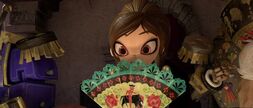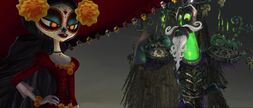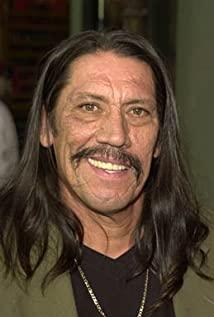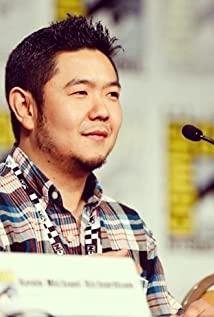The beginning of the story is a bit boring. A group of children visited the museum on the Day of the Dead and discovered the mysterious book of life. The book records that in order to win the love of a girl, two boys continue to grow and experience each other, even at the expense of their lives to find them.
The climax of the whole movie starts from the death of the hero and the Land of the Remembered (the Land of the Remembered). This is not the same as the impression of "death as quiet and beautiful as autumn leaves" in our Chinese memory, but it truly reflects the Mexican attitude towards death.
For us Chinese, the Zhongyuan Festival in July and a half is a frightening festival. When I was very young, my mother said that the ghost gate was open this day, and all the ghosts were released. The children could not go out, and be careful to be possessed by lonely ghosts, or be captured by ghosts.
The same festival has been given a carnival in Mexico. For the locals, the Day of the Dead (Día de Muertos) is divided into two days. November 1 is the "Children's Day"-to pay homage to the dead children, and November 2 is the "Spirit Day". ——Memorial to the dead adults.
The "Ghost Festival" sacrificial activities kicked off at 12 noon on October 31. The big bell of the small town church rang 12 times, notifying people that the "dead" of the dead child has arrived. People prepare a small altar and decorate it with black and orange crepe paper. There is also a paper-cut with a skull pattern on the side, and then water, salt, corn paste and toys are placed, incense and small candles are lit, and they are ready to welcome the children. "Undead".
A festival dedicated to the dead of children or infants is incomprehensible to the Chinese people, because premature death means unspeakable shame, so children have no coffins or graves.
When I was 6 years old, my 12-year-old cousin went swimming with two 10-year-old friends in the river, and all three of them drowned. As the only son of our generation, even though grandparents spoiled his cousin to the sky, aunts and aunts regarded him as a treasure in the palm of his hand, but in the face of his death, everyone secretly wiped their tears and remained silent. The cousin was buried in the small bamboo forest on the upper reaches of the river. There was a small mound without any marks. The people who didn't know the truth didn't even know that it was a small tomb. From then on, everyone in the family was taboo to talk about this child, as if talking about it would bring bad luck. The parents of the other two children worked in the field. After they were fished out of the water, they were placed in baskets at both ends of the pole by men from the same village. He directly filled the pit with loess and blocked everyone's mouths. In the days that followed, no one mentioned the two children again, as if they had never existed before.
In the eyes of Mexicans, there are two kinds of death. One is physical death. This is not a real death. It is the final death that is forgotten if no one pays homage to it. So in the Land of the Forgotten, the entire tone is gloomy gray, and the undead are as listless as wilting grass, and disappear without a trace when the wind blows. For the Chinese, the physical death of a child means the demise of everything, and no one wants to leave a place in memory for a child who has died.
For Mexicans, after commemorating the children, at 12 noon on November 1st, the 12 bells of the church indicate that the "little spirits" have left, and the 12 bells that rang again later indicate that the "spiritual" has come. . As a result, people replaced the white petals sprinkled from the door to the altar in the original home with yellow marigold petals. After prayers, people placed seasonal fruits, tamales, bread soaked in tequila, and favorite foods of the deceased on the altar. If the altar table is full, the remaining sacrifices are placed on the mat, including clothes worn by the deceased, used tapestry, sickles, hoes, etc.
On the point of commemorating Cheng Ling, China is quite similar, but what I don't quite understand is why we burn paper money, and people are tired of money when they are alive, and why money is also used in the Yin Cao Difu built for the undead. When novels and other literary works are guiding public opinion, why can't they build a real society of great harmony for the dead?
After the Mexicans commemorated the completion of the spirit, at 7 pm, the church rang a bell to remind the children to go for the "Ghost Festival" candy. Groups of children disguised as "devils", "witches", and "little pumpkins" walked the streets and alleys with large bags, asking for sweets from house to house. The candy at "Ghost Festival" is different. In the windows of candy shops and bakeries, various exquisite desserts such as "skeleton candy" and "chocolate coffins" are displayed.
In China, children are either locked in their homes by their parents and warned that evil spirits are rampant outside and don’t go out; or they follow the adults tremblingly, with infinite fear of death, go to the graves of the elders they meet, burn incense and kowtow, looking forward to this moment. The time passed quickly.
The difference in attitudes towards death between the two countries is so wide that it is puzzling. However, these are all due to tradition. If you want to study the source carefully, you should leave it to professional scholars.
View more about The Book of Life reviews











